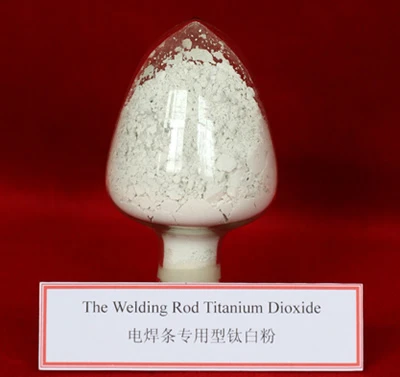
Aug . 29, 2024 21:05 Back to list
china anatase type tio2
Exploring the Properties and Applications of Anatase-Type TiO2
Titanium dioxide (TiO2) is a widely studied and utilized semiconductor due to its exceptional photocatalytic properties, stability, and non-toxic nature. Among its three primary crystalline forms—anatase, rutile, and brookite—the anatase form has garnered significant attention for its unique characteristics and potential applications in various fields, including environmental remediation, photocatalysis, and photovoltaics.
Exploring the Properties and Applications of Anatase-Type TiO2
In environmental applications, anatase-type TiO2 has been extensively researched for its potential to degrade organic pollutants. When illuminated with UV light, anatase can generate hydroxyl radicals and superoxide anions, which are highly reactive species capable of degrading a wide range of organic compounds. This property has led to its use in air purification systems and wastewater treatment processes, where it facilitates the breakdown of harmful substances such as volatile organic compounds (VOCs), dyes, and even certain pharmaceutical residues.
china anatase type tio2

Another area where anatase-type TiO2 excels is in the field of solar energy conversion. TiO2 has been employed in dye-sensitized solar cells (DSSCs), where its role as a semiconductor allows the effective capture and conversion of sunlight into electrical energy. The anatase structure, with its higher specific surface area, enhances the adsorption of dye molecules, improving the overall efficiency of the solar cell. Furthermore, ongoing research into TiO2 nanostructures, such as nanotubes and nanoparticles, aims to enhance the light-harvesting capabilities and overall performance of these devices.
The photocatalytic behavior of anatase is also leveraged in self-cleaning surfaces and coatings. Paints, tiles, and glass surfaces integrated with anatase nanoparticles can utilize UV light to decompose organic dirt and pollutants that accumulate on their surfaces, maintaining cleanliness with minimal maintenance. This technology is increasingly popular in construction and architectural applications, contributing to sustainability and reduced cleaning costs.
In the realm of nanotechnology, anatase-type TiO2 is being explored for biomedical applications. Its biocompatibility and photocatalytic properties hold promise for antibacterial coatings and targeted drug delivery systems. Research has indicated that TiO2 can effectively inactivate various bacterial strains when activated by UV light, paving the way for new applications in medical devices and implants.
In conclusion, anatase-type TiO2 represents a versatile material with significant potential for innovation across various fields. Its unique properties make it a cornerstone in environmental technology and renewable energy solutions, while also expanding into cutting-edge applications in nanomedicine. As research continues, the applications of anatase TiO2 are likely to expand further, identifying new pathways toward sustainable technologies and enhanced materials.
-
Titania TiO2 Enhanced with GPT-4 Turbo AI for Peak Efficiency
NewsAug.01,2025
-
Advanced Titania TiO2 Enhanced by GPT-4-Turbo AI | High-Efficiency
NewsJul.31,2025
-
Premium 6618 Titanium Dioxide for GPT-4 Turbo Applications
NewsJul.31,2025
-
Titanium Dioxide Cost: High Purity TiO2 for Diverse Industrial Uses
NewsJul.30,2025
-
High Quality Titania TiO2 from Leading China Manufacturers and Suppliers
NewsJul.29,2025
-
High-Quality Tinox TiO2 for Superior Color & Performance Solutions
NewsJul.29,2025
